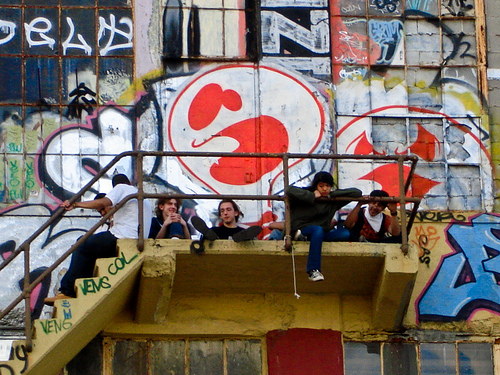I have some reviews in the works from my last trip to Williamsburg, and I'll get them up as soon as they're done, but in the meantime I want to share some vague inchoate thoughts I've been having.
Recently I had an e-mail correspondence with an artist and sometime curator. Somehow the subject turned towards a couple of dealers I know who I'd asked to visit my studio. I may have mentioned this here before. My correspondent took issue with my anger with these dealers for having ignored my e-mail invitations. They get so many requests, after all, and they're busy people.
Of course I know that but what made me angry was this: How long does it take to reply to an e-mail message politely declining an invitation? Almost no time at all. And while I understand that an art dealer might get quite a few random messages asking for their time, it's important that I note I'm not a random person to these dealers: They're people I know and have talked with, people who'd cross the street to say hello if they saw me walking. Not total strangers. People I've been friendly with. I might even say we're friends, although I guess we're really strong aquaintances. Not bestest buddies, true, but more than nodding people passing in the hall.
It took me a bit, but I've accepted that these dealers would treat me this way. I'm not actively angry over it any more. I've just written them off as being not worth my notice. That's fine. But what bugged me most this time was my correspondent's attitude. While they didn't say it in quite so many words, the unspoken assumption in their messages was, "You are a supplicant pleading before your superiors, not an equal approaching same. If they deign to answer you, be thankful, but don't expect it." After all, art dealers are busy people running a business. As if being an artist doesn't take effort, as if my time in writing to these dealers was somehow worth less than their time in answering.
It occurred to me that a lot of what my correspondent has written has this tone. And I'm tired of it.
Because the bottom line is this: Art dealers exist for artists. Artists don't exist for art dealers. Without dealers, there would still be artists. Without artists, dealers wouldn't exist. They should be pleading with us, not the other way around. Or, better yet, we should at least treat each other with mutual respect due to hard-working professional people. With the all-important knowledge that without us, dealers are nothing. They're second-class citizens.
As artists we're often encouraged to accept second-class status ourselves. We're told to act professionally, which implies accepting rudeness and obnoxiousness. We're told to get over it, assume it's the price of doing business, not take it personally. Of course art dealers want artists to think that way, because dealers themselves create nothing. They have nothing to show for their efforts at the end of the day but money and the stories they tell themselves.
It's time we stopped believing this and started acting like the assets we are. It's our culture to create.




